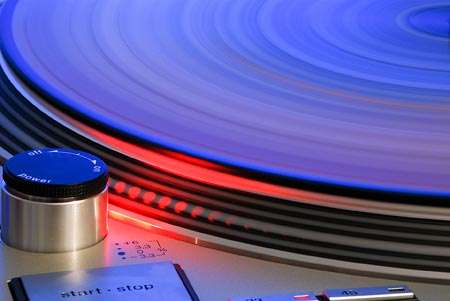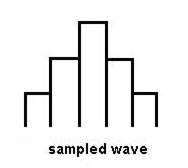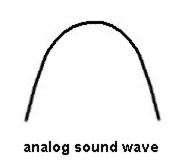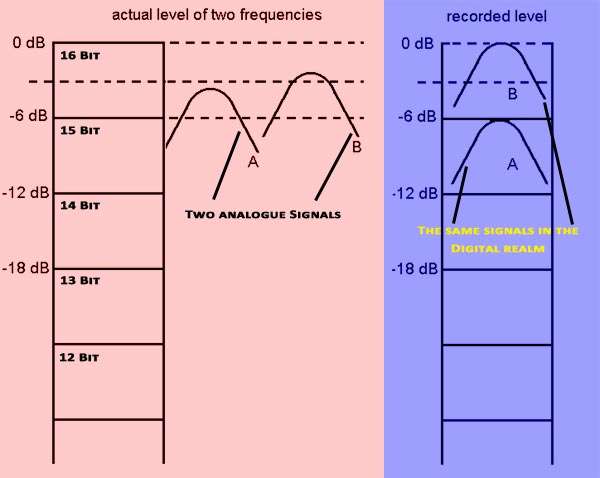Hi, my sweet little Schweinehunde!
Today I´d like to talk about the myths surrounding vinyl records. I will state and explain them - I also will show you that most of them are plain wrong. Let me explain why I want to write about this: because I´ve read many times now that vinyl sounds better while I know that this is simply not true. Some years ago I was a victim of that belief also but after I thought a while about it and after I listened to some scores on vinyl I became aware of the fact that most music sounds awful on vinyl. You´ll have scratches, pops, crackles and noise that destroy the performance of an orchestra that is recorded onto the vinyl surface. Still, people go on and rage over the quality of vinyl, mentioning its infinite frequency response & resolution, that it sounds "warmer" and more lifelike. Therefore I will explain to you why these assumptions are simply false.
At first a few facts about vinyl and its workings. I won´t explain directly how they work, this would be too much for this article. You may know that you have a needle, a stylus, a tonearm and a turntable to play vinyl. When you look at the vinyl record you can see that there are many, many fine lines on it. These lines are the groove. If you look closer you can see that this groove is not a straight line but looks more like a really curvy street. Some curves are steeper, some curves are not so steep. These curves are "read"by the needle. How? Well, the needle "drives" inside these curvy streets like a train drives on a track and they let the needle vibrate from slow to fast movements (don´t look at the vibration, it´s too tiny to be noticed). These vibrations are translated directly into electricity and there you have your sound. Don´t lecture me on the completeness of this description, I know that it´s incomplete.
I just wanted to give a short impression because now it gets interesting. In theory the process of reading a vinyl like this should work fine. In practice however it doesn´t. Just imagine that you are the needle and that dust resides inside the curvy street you are driving on. The tip of the needle is very small so when you are the needle this tiny dust becomes as huge as a house that was built directly onto your street directly in your pathway. Although you are very small, you are very powerful and so you just "smash" through that house on your street, crashing it. Obviously you made a lot of noise and for certain it will vibrate the hell out of you. On your loudspeakers this sounds like a "click".
Now imagine that your record was stored improperly and that it is visibly dirty. From your needle point of view there now is not only a house but a whole bunch of them including some major skyscrapers. If you crash through them it will produce a "pop" and if the skyscraper becomes a mountain you as the needle just have to jump aside onto another street. Result: the needle literally jumps from one groove to another. Even worse: your street hasn´t been cleaned a long time and now has become very dirty, debris lies on it and you as the needle has to step or crash over or through it. That produces noise and crackling. Tired yet?
Because there is more. Imagine further that your turntable isn´t leveled out or that the dragging for the tonearm is misconfigured. You as the needle would experience it that way: you are driving through the curvy streets and you are constantly forced to the left or the right side - but you want to stay exactly in the middle of the street. It is like having a flat tire, you´d have to work against this in order to be up and running. You would be tired very soon if you attempted to do just that. Furthermore, you as the needle are growing older like everyone else. But you don´t get wrinkles or something like that, no. Your needle tip that once was pristinely sharp now gets flatter and flatter over time until it is so wide & flat that you constantly reach both sides of the street where you are driving. In short, you now are a bulldozer driving on the street, destroying the very concrete you´re driving on (-> the grooves). And because we all love little pictures very much, here is a link to some pictures by Chris Supranovitz - these show exactly what I just described.
While this little story isn´t exactly a precise technical description it should give you an impression of the stress a needle goes through during its life. Now you can also imagine that a vinyl record grows older and older each time you play it. If you handle your records with the same loving care as your turntable this aging process is of course slower - still, your record gets older and you can´t do anything about it. In turn, CD or SACD never gets older when played back because your needle is a relatively powerless laser beam which reads the surface of the CD/SACD without touching it. A turntable also has wow and flutter while a CD/SACD does not. Well, these two advantages of the CD are as old as the CD itself and no one talks about them anymore because they have been replaced by more in-depth arguments or - in some cases - subjective asessssments.
_________________________________________________________________________________________________________________________
I´d like to talk about these subjective views on vinyl for the rest of my little essay. Here are the most prominent. Please not that I´ve taken the liberty and took them from Hydrogenaudio.org since they have a site that solely concerns itself with these matters. They are as follows:
- Vinyl always sounds better than CD
- Vinyl requires a better-sounding master because it is physically incapable of reproducing the hypercompressed sound mastered to CD
- Proper vinyl playback is click-free
- Vinyl is better than CD because it reproduces higher frequencies than CD and avoids antialiasing filter issues at the frequencies CDs can reproduce
- Vinyl is better than digital because the analog signal on the vinyl tracks the analog signal exactly, while digital is quantized into steps
- Vinyl has greater or infinite resolution than CD because its dynamic range is higher than for CD at the most audible frequencies
1. Vinyl always sounds better than CD
I can imagine that people came up with this after comparing some vinyl LP to their CD counterpart. But one should always have in mind that vinyl is produced differently and that the playback is completely different to CD. Fact is, playing back a vinyl record produces errors all the time, furthermore it can be strongly influenced by things outside the needle or the turntable. For instance your preamplifier that is requried for LP playback could be misaligned - or your LP could be produced not according to the rules. Your turntable probably isn´t leveled out or the needle is old... there are limitless reasons why vinyl playback is far from perfect. With CD the possibility of these reasons is much more diminished. So, this will add distortions to your music which can make a dull sounding recording better. The "truth" however is on the CD: there the recording sounds as dull as the master produced for the CD and the LP. After decades and decades there still is no technical proof that vinyl sounds better.
2. Vinyl requires a better-sounding master because it is physically incapable of reproducing the hypercompressed sound mastered to CD
It would be nice if it would be that way but sadly it isn´t. I´ve already talked about the Loudness War here many people who love vinyl claim that the master for vinyl must be different because of its limited dynamic capabilities. But... no. Several comparisons on Hydrogenaudio.org have found that many masters for present-day vinyl records are exactly the same as the ones used for their CD counterpart.
3. Proper vinyl playback is click-free
No, it isn´t. Your street is always a bit dusty. You may not hear it but it is.
4. Vinyl is better than CD because it reproduces higher frequencies than CD and avoids antialiasing filter issues at the frequencies CDs can reproduce
Wonderful argument. In theory it is true - in practive however it is not. As you may know the CD only samples with 44.1 kHz which allows a maximum frequency response up to 22.500 Hz. Further than that the unavoidable noise is suppressed by an antialiasing filter, most of the time done with brickwall filtering. Vinyl however doesn´t need this antialiasing filter and should be sonically superior. Yeah, well it should but it isn´t. In practice a correctly configured turntable with a new LP produces frequencies up to only 16.000 Hz - which is the same as most MP3 goes. HOWEVER: vinyl can reach frequencies up to 50.000 Hz - but only if your needle and your stylus are brandnew, your turntable is configured perfectly and your LP is new and washed with an LP washing machine. But even then, do you really know that your brandnew LP was coming from a high definition master? Don´t forget, most LPs are produced from digital masters. It could mean that your brandnew LP was produced from a 24/44.1 master which means it can only contain frequencies up to 22.500 Hz - the same as CD. Furthermore, when the groove of the LP wears out it will happen faster with high frequencies which in turn leads to a dull sounding LP very fast.
5. Vinyl is better than digital because the analog signal on the vinyl tracks the analog signal exactly, while digital is quantized into steps
I fell for this argument myself while it should have been obvious to me that it´s a false argument. As you can see on the image on the right digital sound takes a sample of a certain bitdepth 44.100 times per second (for CD resolution) from the same analogue signal pictured on the left. You can imagine that this produces "gaps" in the original signal - as you can see in the picture: the formerly round wave has become edgy and looks like a bunch of stairs. Hell, it even is stored that way. But one who brings forth this argument simply forgets the reconstruction filter: it is supposed to produce a flawless analogue wave - and it does. After the digitally stored signal has passed the reconstruction filter / aliasing filter (both are (almost) the same - and the latter one is explained in depth by the Nyquist-Shannon-Theorem) it looks exactly like the image on the left side again. In reality the signal can be reconstructed that way with a precision of almost 99%. Sure, digital is not perfect and this reality only really works for louder levels - on smaller levels the resolution is not as good. But the resolution still is better than vinyl - just read the last subjective argument with the next image:
This is one of the most stated arguments: that analogue correctly reproduces volume levels whereas digital does not and cannot. Digital always interprets the intesity of the level within the bitdepth restrictions. When a level doesn´t hit the exact, let´s say, -6 dB mark it will be appointed to the nearest available level. This is true - but this example still is bad. The more bit-depth you have the more precise this process gets. And this example here seems to be an example of a 4 bit recording (the Bit descriptions on the left are wrong). Therefore this diagram is unsuited for the purpose of describing analogue superiority because if we´d assume 4 bit of sampling depth we would have only 16 representable voltage levels! But the 16 Bits for the CD allows for an almost flawless representation of the original signal (over 65000 levels) and 24 Bits even allows over 16 million possible level representations.
6. Vinyl has greater or infinite resolution than CD because its dynamic range is higher than for CD at the most audible frequencies
You can´t imagine how often I´ve read this argument: "CD is limited in its resolution whereas vinyl has infite resolution because it isn´t confined to bits and samplerate". I assume this argument is stated so often because it sounds so easy. First, some facts. Vinyl has a dynamic range about 80 dB, the CD 96 dB. Under theoretically ideal conditions this could improve to 120 dB for vinyl. BUT: the 96 dB of the CD was the "old" measurment when the CD was new. In the years since 1982 some techniques were developed to improve 16/44.1 greatly. Today, the CD reaches around 150 dB when properly dithered in combination with oversampling. Furthermore, digital or CD does only introduce a miniscule amount of noise and distortion compared to vinyl during playback. The usable resolution of CD therefore always stays the same while it will be diminished with LP to a degree with every playback.
Why is that? Because vinyl is noisy - noise decreases the usable resolution. So in reality it´s this way: when translated to the language of digital vinyl mostly has a usable resolution of around 8-12 Bits which is far less than the 16 bit for CD. But when one compares the possible resolution one also has to consider the samplerate. As I´ve stated before, under normal conditions vinyl reaches 16.000 Hz. Combine that with the resolution and you´ll get the very commonplace 12 bit / 32 kHz samplerate. There goes your infinite resolution...
BTW, have you ever thought about the gaps between tracks on your LP? I guess not. How are they produced? They are produced by machines that work digitally. Starting with the late ´70s digital gap producers were introduced to LP cutting. These gap machines worked with 12 bit and 32 kHz samplerate (!) and they were used throughout the ´80s well into the early ´90s. The LP you are listening to therefore was probably produced from a master that reached only 16.000 Hz with a bitdepth of only 12 bit. Even if you´d try it wouldn´t get more resolution, it would not even come close to the CD. It is very likely that 70-80 % of the vinyl LPs still around today were produced with a resolution far less than that of the CD.
_________________________________________________________________________________________________________________________
So, what do we have now? We have a medium that is a century old, that once was the dominating medium worldwide and now has the significance of a niche product. One could go as far and call vinyl truly dead. Only old-fashioned audiophiles that can´t get used to newer times still love the noise, the pops, the crackles, the distortions, the imperfections of this medium. Why are they doing this? Maybe it´s because the vinyl LP is so much similar to ourselves: flawed. Well, the CD is not perfect either, it has jitter and many other obstacles like brickwall filtering - but these are sonically not remotely as severe as the noise and the distortions vinyl inherits all the time. And for sure, the CD never will have the same haptic feeling the LP posesses: touching a huge medium inside a grand paper case. You literally can see how the LP works, it is turning and turning the needle to the middle. It looks like a warm fireplace during a cold winters night. But to me, that is the only advantage there is. The advantage of vinyl is not in its sound but in its haptic.





io fei gibetto a me de le mie case
ReplyDeleteChris Supranowitz has some nice pics
ReplyDeletehttp://reckon.posterous.com/vinyl-record-grooves-under-electron-microscop
What about the RIAA correction?
ReplyDeleteThanks for the link, Vincent. I´ve just incorporated it into the article for people who aren´t reading the comment section. But what do you mean by RIAA correction? Are you referring to the different implementations of it, leading to more or less severe frequency errors with older vinyl records? For my article I just assumed a theoretically perfect RIAA correction even though that´s impossible.
DeleteI don't know what about the RIAA correction Vincent was referring to, but here's a trick to prove to your vinyl-loving friends that they're completely wrong about vinyl sounding great: tell them to hook their turntable up to the CD or tape input on their stereo and crank the volume. Now you can hear what vinyl REALLY sounds like.
DeleteHmm... perhaps the secret is in production perhaps.
ReplyDeleteI've got Diana Krall's "Live in Paris" as MP3, audio CD and a vinyl rip to flac done on some serious equipment.
The vinyl rip sounds better, more detailed and more dynamic.
I've had siimilar experiences with Paul Simon and the Dire Straits.
Vinyl playback is influenced by a lot of things. For example, a different mat will produce a different frequency response. Changing the weight of the pick-up will produce a different frequency response, etc. Furthermore, many vinyl amps produce audible treble errors because of an impedance mismatch, amplifying frequencies beyond 10,000 Hz by 5-15 dB (depending on the pre-amp). That alone will cause audible differences, it also might explain why you hear more details on your vinyl rip.
DeleteAnother possibility might of course be that the vinyl version has been mastered differently.
For all these reasons, it´s impossible to compare an LP to the CD counterpart. One things is for sure however: the original sound as intended by the mixing and/or mastering engineer can be found on CD/MP3.
""scratches, pops, crackles and noise ""
DeleteI can listen past those and hear the more lifelike musical event.
Many people cannot filter it out in their minds.
When the Red Book standard was created by Sony and Philips, they solved the problems that bothered them and that they could measure - noise, clicks, scratches, pops, crackles, wow, flutter - they did not listen for other aspects of sound that did not bother them or that they could measure - warmth, realism, harmonic and instrument tonal completeness, and so on.
They fixed one set of problems and did not think they were creating additional problems.
The problems you mentioned are exactly what differentiates good playback from bad one. What do you think a CD, vinyl, tape or something else is? Not something magical where vinyl performs wonders and recreates realism, warmth, harmonic and instrument tonal completeness.
DeleteNo, all of them are TECHNICAL devices, developed and engineered by people who used the laws of physics, mathematics and their engineering skills. The CD simply the next generation. And the reason why you probably don´t like it is that the CD perfectly conveys the sound of the master. The LP doesn´t, it adds so many errors that I always wonder how it can even sound remotely like music.
These added errors create the ultimate, "realistic" experience you so crave. It is a lie and not the truth. The LP colours sound, you just happen to like that sound. But again: it is not the truth.